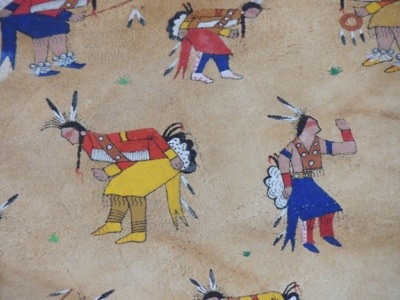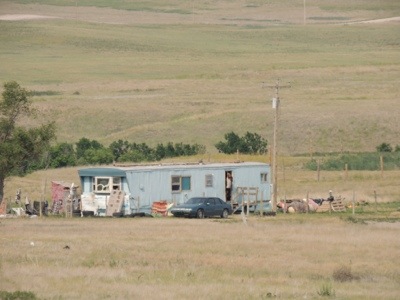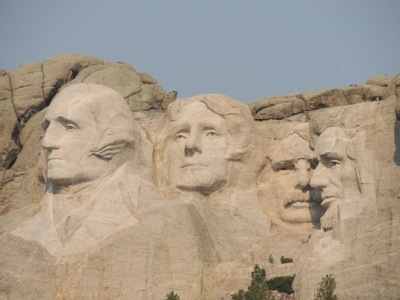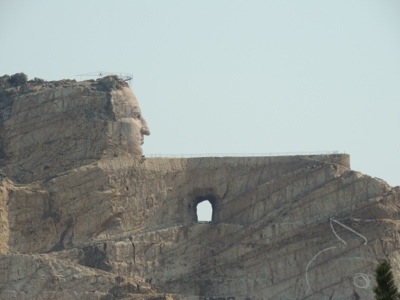On June 26, 2012 we left the Black Hills, through Deadwood, Sturgis, and Rapid City and entered the rolling landscape of the South Dakota prairie and grassland. As we passed through Deadwood, I was reminded of what we learned in Lead, SD about gambling in the state. Each town/city has legislation over whether or not to allow gambling. In Deadwood (as well as parts of Rapid City) gambling appears almost unregulated, even small gas stations have slot machines. Deadwood is full of casinos and gaming parlors. Deadwood is also a major tourist attraction; they recreate a “shoot-out” each evening in the summer for the tourists along Main Street. We really didn’t spend too much time in Deadwood, this type of tourist excursion is not on our agenda.
As we passed through to the grasslands outside Rapid City and the Black Hills grew smaller behind, the sense of isolation begin to grow. Nothing stretched off to the sides of the highway but open spaces. Some of the space was bring used for cattle grazing or farming. We passed through small towns; when I say small, I really mean small. Four houses, a farm, horses, cattle, maybe some tractors, and a truck or two. Prairie dogs lined the highway watching us go by. There was very little traffic, I think we maybe passed six cars in about 45 minutes and this was on a state highway.
Right before we entered the Pine Ridge Reservation we clipped the edges of the Badlands. Well, to be honest, we took a wrong turn. Luckily we only went about 8 miles before we realized our mistake. I had never been to the Badlands before, but just that first glimpse was enough to make me want to spend some serious time exploring the area – as a geologist.
As we entered Pine Ridge, the emptiness seemed to increase. The low density of houses became even less. The landscape rolled on, undulating in the distance. We reached Sharp’s Corner, a small grouping of houses along BIA HWY 27. There was a crowded store, the parking lot full of pickup trucks. We saw a grouping of about 15 tepees in the distance with a sign that said “No Tourists”. It reminded us that it was Tree Day, the day that families pick the Cottonwood tree for the Sundance Ceremony.
We reached Oglala Lakota College Administrative Offices, just southwest of Kyle, SD. Across the street is the Lakota Prairie Resort, where we will be staying for three nights; there is also an office for the Pine Ridge Chamber of Commerce. There is nothing else.
Since I have finally discovered how to add the photos to my blog via the Word Press app for my iPad, here are some photos from the last two days.
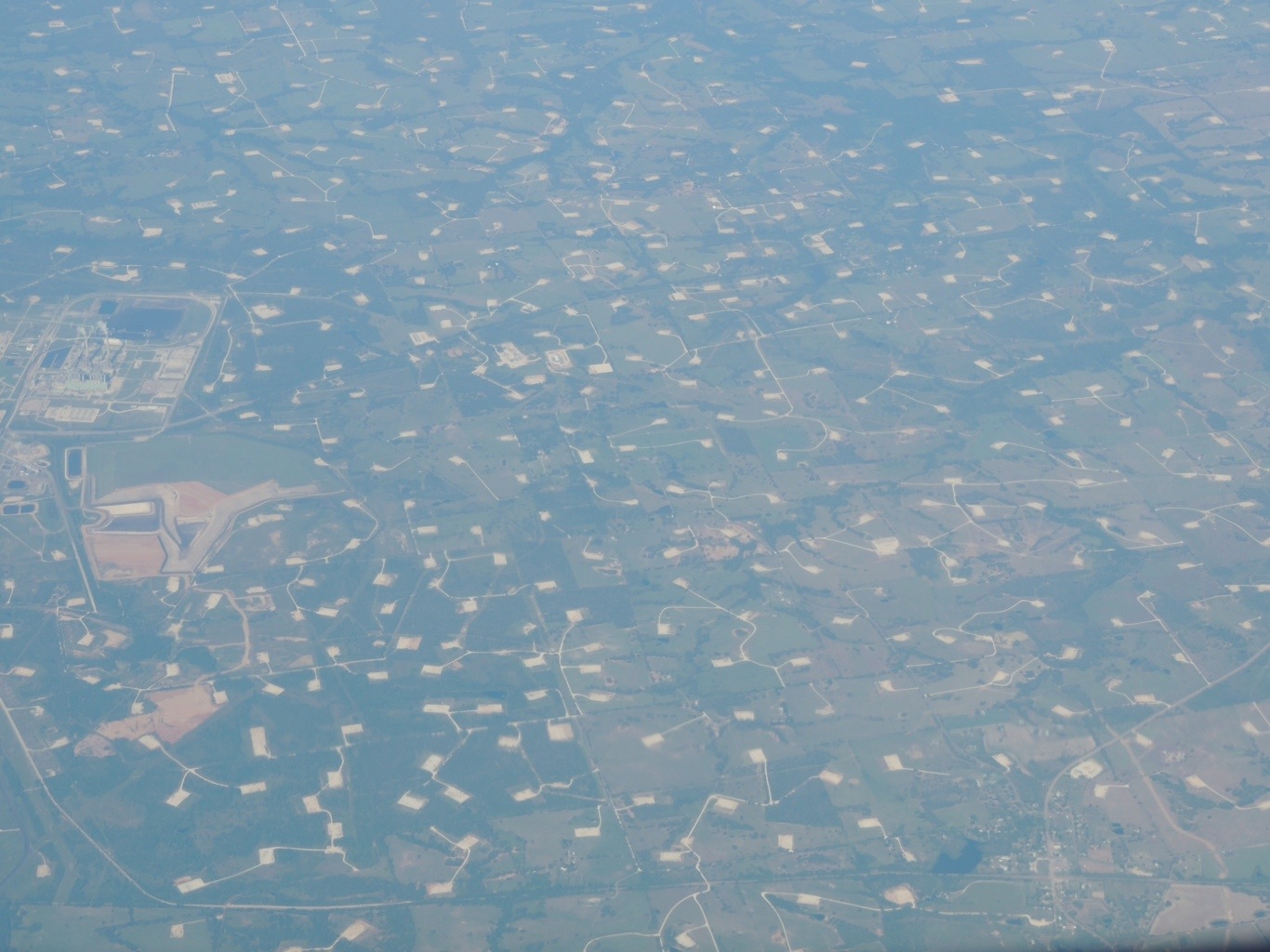
I know it is fuzzy, but I took this photo out of the plane window over Texas. Each square is a platform for oil/gas drilling.
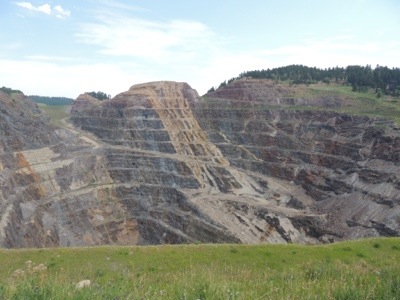
This is a photo of the worlds’s most productive gold mine, the Homestake mine in Lead, SD.
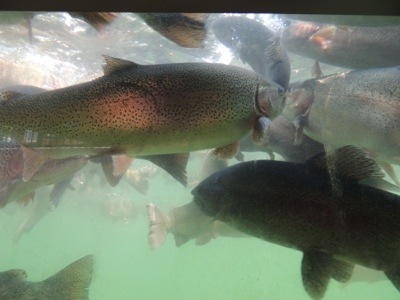
One of the oldest trout hatcheries in the west, the D.C. Booth Fish Hatchery in Spearfish, SD.
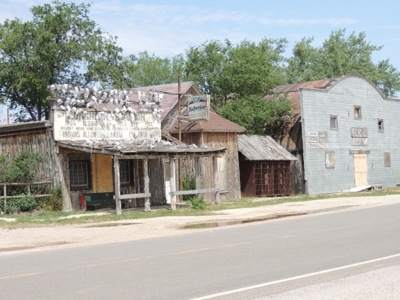
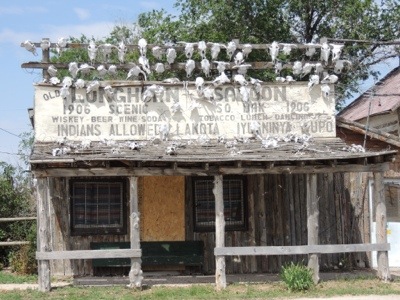
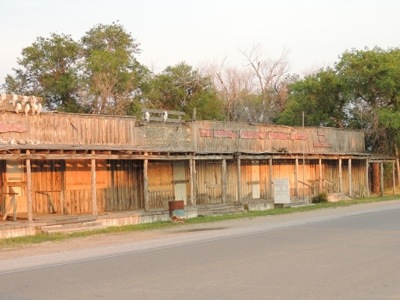
The three photos above are of Scenic, SD. A more or less abandoned (ghost town) town at the intersection of State Highway 44 and BIA HWY 27. I loved all the cattle skulls.

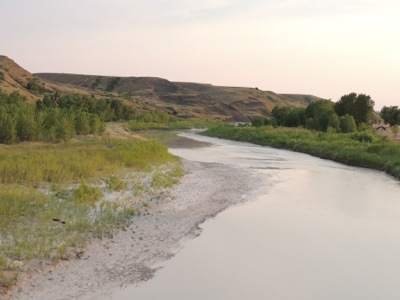
The two photos above are of the surrounding area. The Cheyenne River is a major river that flows through the grassland.

It was dusk as we were driving from Rapid City back to Kyle. The pronghorns were out all along the road in the Badlands.

